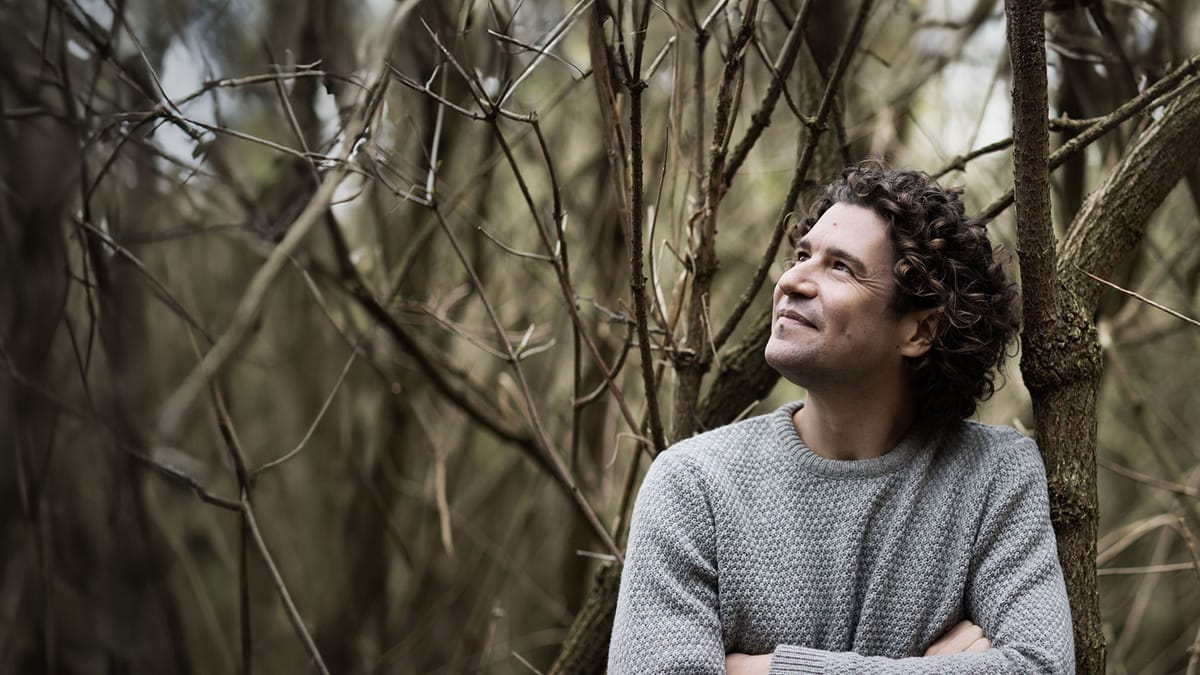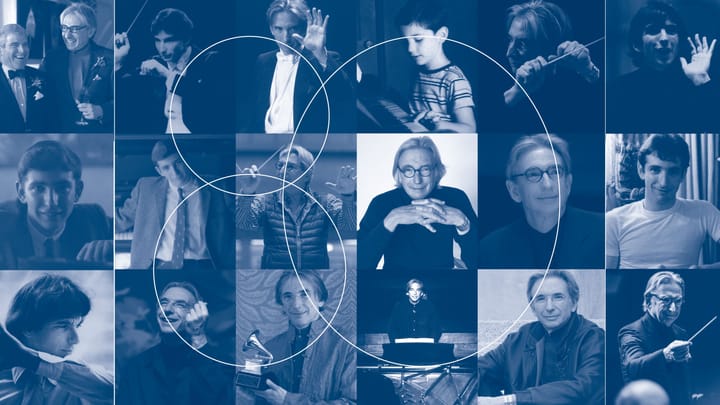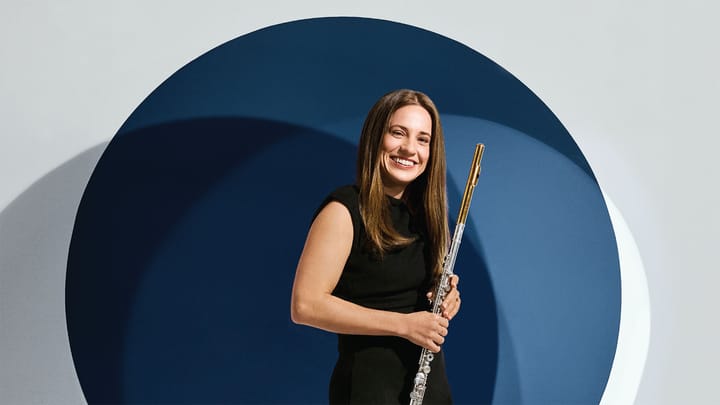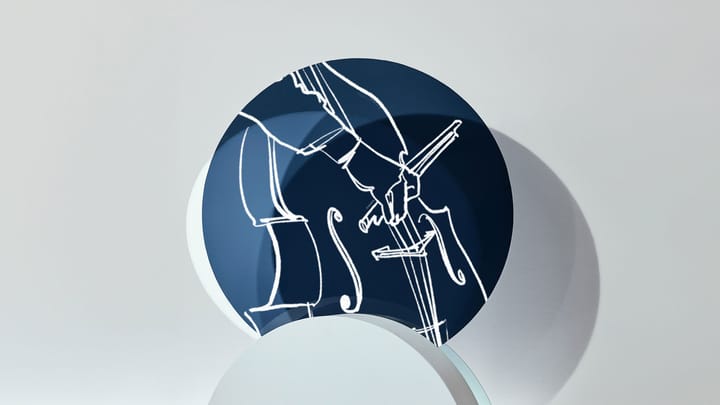In This Program
The Concert
Friday, February 28, 2025, at 7:30pm
Saturday, March 1, 2025, at 7:30pm
Sunday, March 2, 2025, at 2:00pm
Robin Ticciati conducting
Ludwig van Beethoven
Piano Concerto No. 4 in G major, Opus 58 (1806)
Allegro moderato
Andante con moto
Rondo: Vivace
Francesco Piemontesi
Intermission
Sergei Rachmaninoff
Symphony No. 2 in E minor, Opus 27 (1907)
Largo–Allegro moderato
Allegro molto
Adagio
Allegro vivace
Francesco Piemontesi’s appearance is generously supported by the Shenson Young Artist Debut Fund.
Robin Ticciati’s appearance is supported by the Louise M. Davies Guest Conductor Fund.
These concerts are generously sponsored by the Athena T. Blackburn Endowed Fund for Russian Music.
These concerts are sponsored by the J. Peter Cahill Guest Pianist Fund.
Program Notes
At a Glance
On the second half of the program is Sergei Rachmaninoff’s sprawling and novelesque Symphony No. 2. He almost didn’t write it after the trauma of his First Symphony, which had a disastrous premiere that sent the composer into a deep depression solved only by hypnotherapy. The Second Symphony’s rich melodies have been lifted and remixed by a variety of pop and jazz artists over the years, but only Rachmaninoff could weave them all together into such an expansive tapestry.
Piano Concerto No. 4
in G major, Opus 58
Ludwig van Beethoven
Baptized: December 17, 1770, in Bonn
Died: March 26, 1827, in Vienna
Work Composed: 1805–06
SF Symphony Performances: First—January 1927. Alfred Hertz conducted with Ernö Dohnányi as soloist. Most recent—January 2022. Christoph Eschenbach conducted with Jan Lisiecki as soloist.
Instrumentation: solo piano, flute, 2 oboes, 2 clarinets, 2 bassoons, 2 horns, 2 trumpets, timpani, and strings
Duration: About 35 minutes
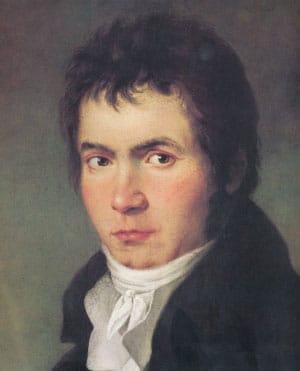
The pianist and writer Charles Rosen remarks in The Classical Style that “the most important fact about the concerto form is that the audience waits for the soloist to enter.” One or another person in the audience at the marathon concert in the freezing Theater an der Wien on December 22, 1808, may have recalled hearing Mozart play his great Piano Concerto in E-flat major, K.271, in which the soloist surprises us by interrupting the orchestra in the second bar. Most listeners would have expected Beethoven’s new concerto to begin like his previous ones and virtually all others they knew, that is, with an orchestral passage lasting a couple of minutes and introducing several themes, after which the soloist would make a suitably prepared entrance.
Concerto is a form of theater. Ludwig van Beethoven, an experienced and commanding pianist, had a keen feeling for that, and his first three mature piano concertos and his Violin Concerto, all of which had been heard in Vienna by the spring of 1807, make something striking of the first solo entrance. The older Beethoven grew, the more imaginative he became. In the Triple Concerto, a beautiful, problematic work that was completed a couple of years before the Fourth Piano Concerto, the cello enters with the first theme, but a breath later than you expect and with a magical transformation of character. In the Violin Concerto, the solo arises spaciously from the receding orchestra; after that comes the Emperor Concerto, where right at the beginning three plain chords provoke three grand fountains of broken chords, trills, and scales from the piano. But it is here, in this most gently spoken and poetic of all his concertos, that Beethoven offers his most radical—to begin with the piano alone. It is a move without precedent. What is also remarkable is how rarely Beethoven has been copied in this stroke.
The Music
What the piano says is as remarkable as its saying anything at all at this point. Beginning with a soft, densely voiced, dolce chord, the piano’s whole brief phrase is arresting in its subtle rhythmic imbalance. The still greater wonder is the orchestra’s hushed, sensitive, and far-seeing, harmonically remote response. The persistent three-note upbeat makes this music tender cousin to the Fifth Symphony (in progress at the same time though completed only two years later). The rhythmic elasticity of the first solo-and-orchestra statement-and-response foreshadows an uncommon range of pace.
The second movement, accompanied by strings only, has become the concerto’s most famous. Its comparison to Orpheus taming the wild beasts with his music was for years attributed to Franz Liszt, though we have since learned that Adolph Bernard Marx first floated the idea in his Beethoven biography of 1859. Even earlier than that, Beethoven’s pupil Carl Czerny had suggested that “in this movement (which, like the entire concerto, belongs to the finest and most poetical of Beethoven’s creations) one cannot help thinking of an antique dramatic and tragic scene, and the player must feel with what movingly lamenting expression his solo must be played in order to contrast with the powerful and austere orchestral passages.”
In this second movement, the orchestra is loud, staccato, in stark octaves. The piano is soft, flowing, songful, richly harmonized. At the end, after a truly Orphic cadenza—and Beethoven almost persuades us that he invented the trill expressly for this moment—the orchestra has learned the piano’s way. Only the cellos and basses remember their opening music, but just briefly, and their mutterings are whispered pianissimo.
Until the conclusion of this sublime movement, this is Beethoven’s most quietly scored piano concerto. In the finale, which takes a charmingly oblique approach to the question of how to resume the work after the evocative scene just played, trumpets and drums appear for the first time. Not that this movement is in any way grand; rather, it is lyrical and witty. It is also, with its two sections of violas, given to outrageously lush sounds—one more surprise in this most subtle, suggestive, and multifaceted of Beethoven’s concertos.
—Michael Steinberg
Symphony No. 2 in E minor, Opus 27
Sergei Rachmaninoff
Born: April 1, 1873, in Semyonovo, Staraya Russa, Russia
Died: March 28, 1943, in Beverly Hills, California
Work Composed: 1906–07
SF Symphony Performances: First—November 1912. Henry Hadley conducted. Most recent—July 2018. Alexander Prior conducted.
Instrumentation: 3 flutes (3rd doubling piccolo), 3 oboes (3rd doubling English horn), 2 clarinets, bass clarinet, 2 bassoons, 4 horns, 3 trumpets, 3 trombones, tuba, timpani, percussion (cymbals, snare drum, bass drum, and glockenspiel), and strings
Duration: About 55 minutes
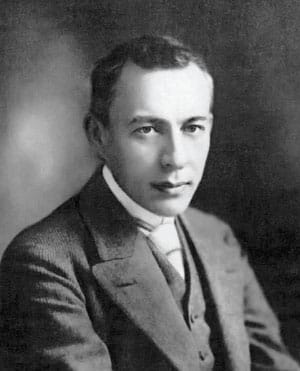
After finishing this symphony, Sergei Rachmaninoff swore he would never write another. It was almost 30 years before he changed his mind and began work on his third and last essay in the form. Meanwhile, the wonder was that he had written No. 2. The premiere of his Symphony No. 1 in 1897, horribly conducted by Alexander Glazunov, was such a disaster that it took three years of psychotherapy and hypnosis before Rachmaninoff could again face writing a large-scale composition. It was the instantly popular Piano Concerto No. 2 that freed him then, but even so, it was a long time before the notion of “symphony” ceased to make him shudder.
When he wrote the Symphony No. 2 he was living in Dresden, where he had gone to escape the constant clamor for his services as a conductor. There he also composed his Piano Sonata No. 1, the tone poem The Isle of the Dead, and for his first American tour in 1909, the Piano Concerto No. 3. Thirty-three years old, he was in his fifth year of contented marriage, a father (his second daughter, Tatiana, was born about the time the symphony was completed), an experienced composer in many genres, an unsurpassed and scarcely equaled pianist, and a highly esteemed conductor. As a composer he was original as well as experienced, with a tone of voice and melodic style all his own and, as many attempts have proved, particularly in film studios, inimitable. In his Preludes and Études-Tableaux for piano he developed an impressive skill at composing a highly economical sort of music, but in his symphonies and concertos he preferred, at least at this point in his development, a more expansive manner. That manner was expansive enough in this instance to have disturbed conductors into making many cuts, some minor and some brutal.
The Music
Rachmaninoff begins in mystery, with pianissimo low strings. What the cellos and basses play here is a motto that turns out to have a large role in the symphony, sometimes on the surface, sometimes beneath it. Immediately, sonorous wind chords vary its first three notes and the violins make lachrymose response. The texture becomes more tightly woven, with imitative entrances following fast upon one another; at the same time, the melodic flow is gorgeous. The penetrating high writing for violas is especially effective. Rachmaninoff slowly works this up to an intense climax from which he then descends rapidly.
Alone, the English horn muses on these events for a moment. Strings, in softly shuddering tremolando, play a fragment of a rising scale, and the main part of the first movement has begun. The first theme, which the violins introduce, is yet another variant of the introduction’s motto, now urgent and forward-thrusting. It is presented in a broad paragraph, and Rachmaninoff’s command of such spans is very impressive indeed. One of Rachmaninoff’s beautiful ever-descending melodies brings the exposition to its quiet close.
A violin solo reminds us of the introduction. After the brief moment of quiet, the music pushes forward. Slowly the bass descends. The cellos recall the motto, the violas interject violent shudders. As the bass begins to rise again, a great crescendo begins. We hear some triumphant fanfares, but this is just a way-station. The agitated journey resumes: Rachmaninoff has learned well from Tchaikovsky how to build suspense. Through the storm we can make out fragments of the opening theme. We are home, and the recapitulation has begun. And once home, Rachmaninoff moves swiftly into a powerful coda.
The second movement, the scherzo, is wildly energetic, particularly brilliant orchestral writing. Midway, Rachmaninoff also gives us one of his broadly Romantic tunes. That provides its own pleasure, but even greater is the delight of the quietly stalking retransition to the driving main theme. The close is humorous disintegration. Then the trio: the second violins start a brilliant fugue. A swift transition leads us into the return of the scherzo, in whose coda Rachmaninoff, as he was so fond of doing, cites the Dies irae (Day of Wrath) from the Gregorian Mass for the Dead. This phrase is suggested by the horns at the opening of the movement; toward the end it becomes explicit.
In the beautiful Adagio we find Rachmaninoff’s melodic genius working at full power. He starts as though in mid-phrase with violas winding long garlands of triplets, over which the violins play a phrase that begins with an unforgettable upward thrust. That one is the phrase people usually come out singing after this symphony. But all this is just introduction. The main matter is a lovely clarinet solo, a wonderful instance of Rachmaninoff’s way of expanding an idea on and on. The melody takes 23 measures to say its say, never repeating itself literally, though circling about a few notes within a limited compass. It is, among other things, a reminder that Rachmaninoff was also a marvelous songwriter. But even when the clarinet stops, the melody is not over, and the violins carry it still further.
When this long and arresting paragraph ends, which it does with the great yearning phrase that began the movement, the violins bring back their lamenting phrase from the symphony’s introduction, though it is now more than twice as fast. In fact, the introduction now yields material for the violins, for English horn and oboe, and eventually for the full orchestra to explore. Again Rachmaninoff brings in one of his gradually descending bass lines, leading to a grand arrival. There is a swift drop to pianissimo, a long silence, and then a lovely passage, full of mystery, in which solo instruments, one after one and beginning with the horn, briefly caress the yearning phrase. When the flute takes its turn, the violins softly interject their phrase from the introduction. This intimate passage proves to be the transition to the return of the great melody that the clarinet played at the beginning of the movement, now given to the violins. Woodwinds decorate the melody with the yearning phrase. From here, the movement sinks to a spacious and quiet close.
The finale, in E major, begins headlong. The first contrasting theme is a quietly conspiratorial march; the transition to this, with timpani, plucked low strings, and muted horns is particularly fine. The march is just an interlude. The forceful and speedy opening music returns, to lead to one of Rachmaninoff’s “big tunes.” If we know the Second and Third piano concertos, we can safely guess that this, grandly presented, will be the material for the final cresting.
But there is much adventure before we get to that point. First comes the surprise of a return for just six measures to the tempo of the slow movement and to its beautiful introductory phrase. Then the high-speed movement resumes, and in this development section Rachmaninoff gives us one of his most amazing passages, a network of descending scales, slow and fast, high and low, syncopated and straight, that generate such a swirl of sound that all the bells in Russia seem to be ringing. From here on, matters develop much as we would expect, with a recapitulation in whose first pages the carillon scales are not altogether forgotten, with a grand peroration based on the big lyric tune, and a blood-stirring rush to the close, which is sealed with Rachmaninoff’s familiar “signature” cadence YUM-pa-ta-TUM (this time slightly zipped up to YUM-pa-ta-ta-TUM).
—M.S.
About the Artists
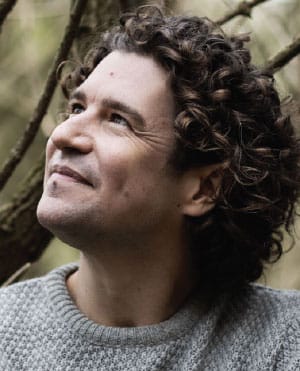
Robin Ticciati
Robin Ticciati has been music director of the Deutsches Symphonie-Orchester Berlin since 2017 and Music Director of Glyndebourne Festival Opera since 2014. He was Principal Conductor of the Scottish Chamber Orchestra from 2009–18. He is a regular guest with the Bavarian Radio Orchestra, London Philharmonic, Budapest Festival Orchestra, and Chamber Orchestra of Europe. In recent years, he has also appeared with the Berlin Philharmonic, Vienna Philharmonic, London Symphony, Czech Philharmonic, Swedish Radio Symphony, Royal Concertgebouw Orchestra, Orchestre National de France, Dresden Staatskapelle, and Leipzig Gewandhaus Orchestra. In the United States, he has appeared with the Cleveland Orchestra, Philadelphia Orchestra, and Los Angeles Philharmonic. He made his San Francisco Symphony debut in January 2023.
His acclaimed discography includes Berlioz with the Swedish Radio Symphony Orchestra; Haydn, Schumann, Berlioz, and Brahms with the Scottish Chamber Orchestra; Dvořák, Bruckner, and Brahms with the Bamberg Symphony Orchestra; and Bruckner, Debussy, Duruflé, Duparc, Fauré, Ravel, and Bruckner with Deutsches Symphonie-Orchester Berlin.
Born in London, Ticciati is a violinist, pianist and percussionist by training. He was a member of the National Youth Orchestra of Great Britain when, aged 15, he turned to conducting under the guidance of Colin Davis and Simon Rattle. He is now the Sir Colin Davis Fellow of Conducting at the Royal Academy of Music and was awarded an OBE for services to music in the 2019 Queen’s Birthday Honours.
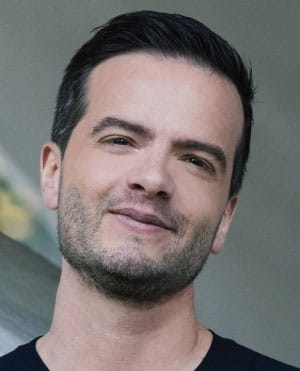
Francesco Piemontesi
This season Francesco Piemontesi appears with the Chicago Symphony, Cleveland Orchestra, Pittsburgh Symphony, Oslo Philharmonic, Helsinki Philharmonic, Orchestre National de France, NDR Elbphilharmonie Orchestra, Frankfurt Radio Symphony, and Filarmonica della Scala. With Robin Ticciati, he performs with the Budapest Festival Orchestra and tours with the London Philharmonic, and makes his San Francisco Symphony debut with these performances.
Piemontesi has also appeared with the Berlin Philharmonic, Boston Symphony, New York Philharmonic, Los Angeles Philharmonic, London Philharmonic, Leipzig Gewandhaus Orchestra, Zurich Tonhalle Orchestra, Orchestre de Paris, and Israel Philharmonic. He is regular guest at the Salzburg Festival, Lucerne Festival, Schleswig-Holstein Musik Festival, as well as the BBC Proms.
His recordings include Ravel’s Piano Concerto in G major, Messiaen’s Oiseaux exotiques, and Schoenberg’s Piano Concerto for Pentatone; Liszt’s Années de pèlerinage for Orfeo; and Mozart’s piano concertos with the Scottish Chamber Orchestra on Linn Records. Piemontesi also demonstrated his deep affinity with Debussy in his recording of the Préludes for Naïve.
Born in Locarno, Switzerland, Piemontesi studied with Arie Vardi before working with Alfred Brendel, Murray Perahia, Cécile Ousset, and Alexis Weissenberg. He rose to international prominence with prizes at several major competitions, including the 2007 Queen Elisabeth Competition. Since 2012, he has been artistic director of the Settimane Musicali di Ascona.

